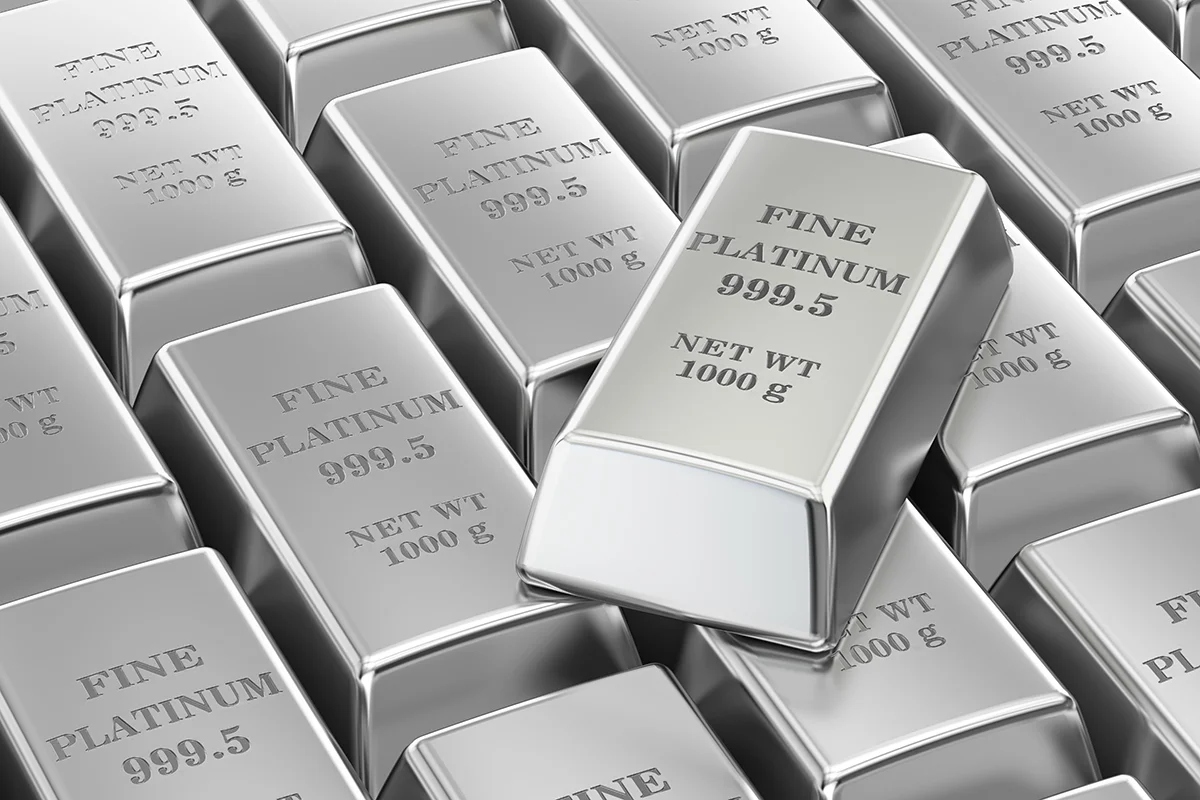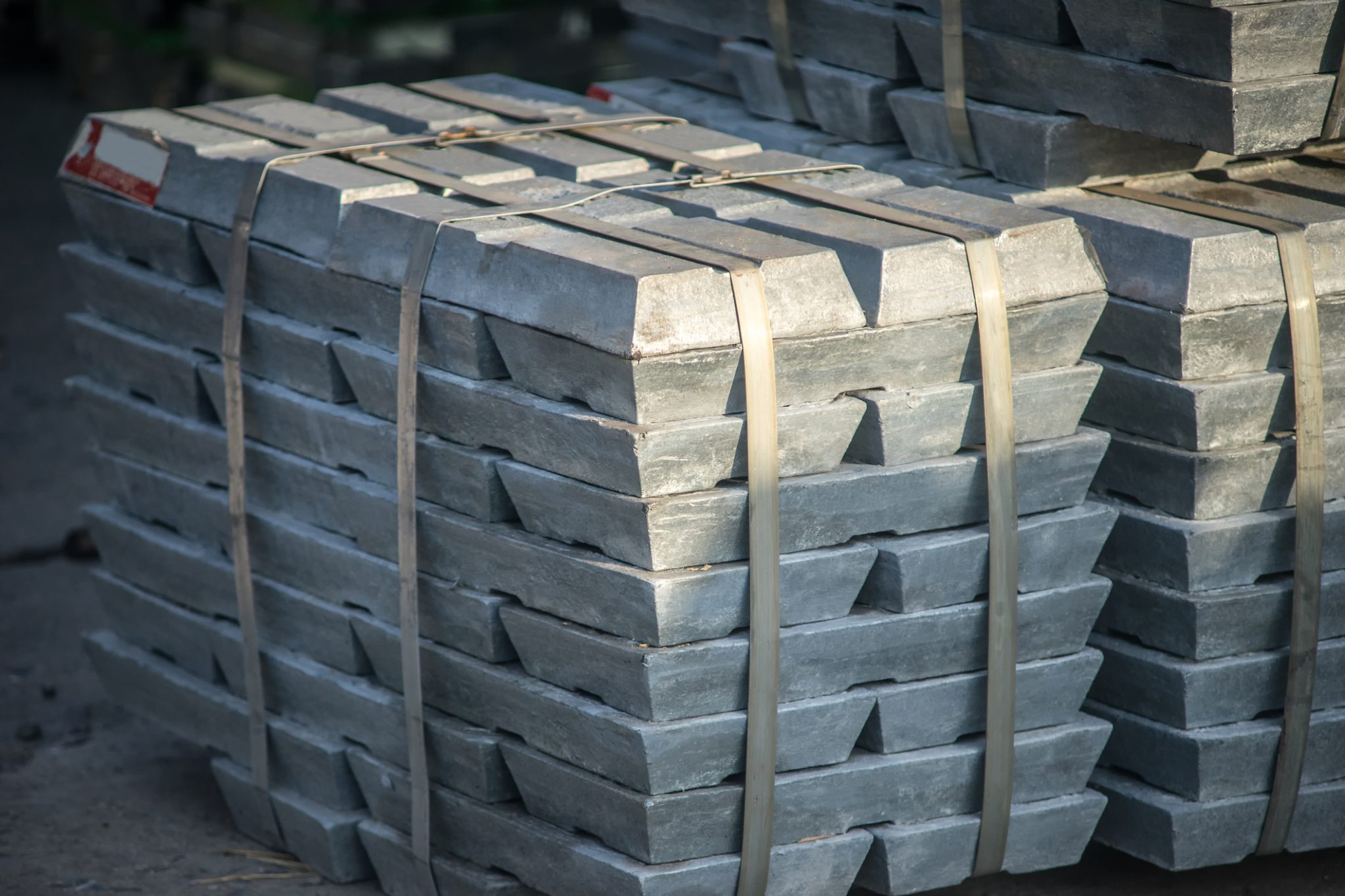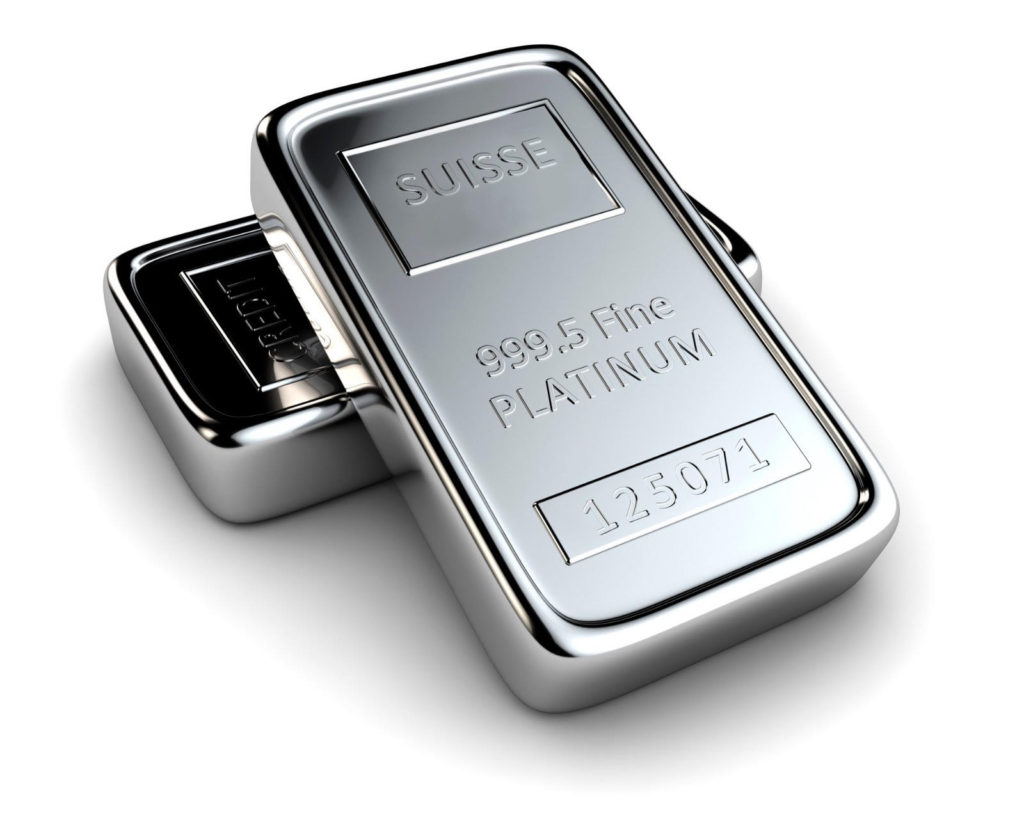Is Platinum A Good Investment? Understanding The Pros And Cons
Explore the allure of platinum investments. Discover its scarcity, industrial demand, and potential as a store of value. Is platinum a good investment?
Author:Dexter CookeReviewer:Darren McphersonJan 19, 202419.5K Shares414.9K Views

Investors often seek precious metals as a means of diversifying their portfolios and safeguarding against economic uncertainties. Platinum, a rare and valuable metal, has gained attention in the investment landscape. This article explores the question, "Is platinum a good investment?" by examining the unique characteristics, market dynamics, and potential advantages and disadvantages of investing in platinum.
Among investors, platinum has experienced a sharp increase in popularity. However, what precisely is platinum, where can one find it, and why is it so valuable?
While platinum mining has not been done for thousands of years, gold mining has. Platinum wasn't discovered until 1735 due to its higher boiling point and the rarity of it occurring in its natural form.
Northern South African mines produce the majority of the world's platinum. It's difficult to extract. Rarely is platinum found alone; instead, it is typically found with other basic metals including nickel, copper, and chrome.
Underground deposits have to be refined before they can be regarded as pure, and platinum is very uncommon due to the difficulty of this procedure.
The final destination of this commercial-grade metal determines how platinum is used. The automobile industry is the intended use for about 40% of platinum.
Catalytic converters, a contemporary necessity in the fight against hazardous emissions, are primarily made from it. It is utilized to a lesser extent in the fuel cells of the most recent electric vehicle models.
As one might anticipate, approximately 31-38% of it is turned into jewelry. Customers who think platinum is better than gold find it very appealing because of its scarcity and expensive cost.
A fifth is accounted for by industry. Platinum is included in a wide range of products, including pacemakers and fertilizer. Bullion is made out of the remaining portion. For the purpose of creating platinum bars and coins for the investment market, anywhere from 2 to 11% is employed.
Understanding Platinum
Platinum, a precious metal with distinct characteristics, has captured the attention of investors seeking diversification and value in their portfolios. Before delving into the prospects of platinum as an investment, it's crucial to understand its properties and significance in various industries.
Chemical Properties
Platinum, symbolized as Pt on the periodic table, belongs to the platinum group metals (PGMs). It boasts remarkable chemical properties, including high density, malleability, and corrosion resistance. These attributes make platinum a coveted material not only for investment purposes but also for industrial applications.
Industrial Uses
One of the primary drivers of platinum demand is its extensive use in industries. The automotive sector relies on platinum for catalytic converters, where it plays a crucial role in reducing harmful emissions. Additionally, platinum finds applications in the production of various electronic components and in the healthcare sector for certain medical devices.
Catalytic Properties
Platinum's catalytic properties are unparalleled, making it a catalyst in chemical reactions. This feature contributes to its importance in industries ranging from petrochemicals to pharmaceuticals. The ability to facilitate reactions efficiently adds to platinum's value both industrially and as an investment.
Rarity And Scarcity
Unlike more common precious metals like gold and silver, platinum is relatively rare. The majority of global platinum production comes from a few mines, predominantly situated in South Africa. This scarcity enhances platinum's intrinsic value and contributes to its appeal among investors.
Various Platinum Investment Options
Investing in platinum offers a variety of alternatives, much like investing in gold and silver. Platinum can be bought as bullion, but there are other methods to invest in the precious metal without having to acquire it outright, including equities or exchange-traded funds (ETFs).
Here are a few things to think about:
Physical Platinum
The easiest way to invest in platinum is through physical metal, but there are additional factors to take into account, such as insurance and storage. Coins, bars, ingots, and rounds are among the forms of platinum bullion that can be bought, just like gold and silver. Precious metal traders sell these tangible assets, which can be kept in storage facilities or safe deposit boxes.
Rare coins and other collectible platinum items may be worth more than just the current price of platinum because of their historical significance and rarity.
Platinum ETFs
Investors can gain exposure to platinum with Platinum ETFs without having to physically hold the metal. These funds invest in securities backed by platinum, which may include the equities of firms that mine platinum or actual platinum. They function similarly to gold and silver exchange-traded funds (ETFs).
Investing in ETFs offers two main advantages. First, you can increase your exposure to the underlying asset by pooling your money with that of other investors. Secondly, you lower your risk by distributing your investment among several securities. Just keep in mind that ETFs have expense ratios that include marketing, administrative, and management fees.
Platinum Stocks
Platinum stocks, which are usually shares in businesses that mine, process, or use platinum, are another option for investors. Similar to platinum ETFs, these stocks are usually traded on stock exchanges and provide investors with exposure to the platinum market without requiring them to possess genuine platinum.
Remember that the number of platinum stocks is lower than the number of gold stocks. Furthermore, it's important to examine a company's operations before investing in it because some platinum mining firms do not have platinum as their primary emphasis.
Pros Of Investing In Platinum
As investors seek alternatives to traditional assets, platinum emerges as a unique option with potential advantages. Evaluating the pros of investing in platinum provides insights into its role in a well-balanced portfolio and the factors that contribute to its appeal.
Diversification Benefits
Including platinum in an investment portfolio offers diversification benefits. Precious metals, with their low correlation to traditional assets like stocks and bonds, can act as a hedge during market uncertainties. Platinum's ability to provide diversification contributes to its attractiveness among investors aiming to spread risk.
Historical Value And Prestige
Platinum has a rich history, with roots in ancient civilizations where it was highly prized for its rarity and aesthetic appeal. Over the years, platinum has maintained its prestige, and its historical value adds to its allure as an investment. Investors often seek assets with a legacy of enduring worth, and platinum aligns with this criterion.
Potential For Capital Appreciation
The potential for capital appreciation is a key consideration for investors, and platinum offers this prospect. While its market dynamics can be influenced by various factors, including industrial demand and economic conditions, the rarity of platinum positions it as a metal with the potential for long-term value appreciation.
Inflation Hedge
Precious metals, including platinum, are often considered hedges against inflation. As the value of fiat currencies fluctuates, tangible assets like platinum have the potential to retain purchasing power. Investors concerned about the impact of inflation on their portfolios may turn to platinum as a safeguard.
Industrial Demand Stability
Platinum's consistent demand in industrial applications, particularly in the automotive sector, provides a stable foundation for its market. The continued growth of industries relying on platinum ensures a level of demand that can support its value, even during economic fluctuations.
Cons Of Investing In Platinum
While platinum has its merits as an investment, it's crucial for investors to be aware of the potential challenges and drawbacks associated with including platinum in their portfolios. Understanding the cons of investing in platinum provides a well-rounded perspective on the complexities of this precious metal as an investment choice.
Volatility In Platinum Prices
Platinum prices can be more volatile compared to other precious metals. Fluctuations in demand, changes in industrial production, and global economic conditions can contribute to significant price swings. This volatility may pose challenges for investors seeking stable and predictable returns.
Economic Sensitivity
Platinum's price is closely tied to economic conditions, particularly in industries like automotive manufacturing. Economic downturns or reduced manufacturing activity can result in decreased demand for platinum, impacting its price negatively. Investors should be mindful of platinum's sensitivity to broader economic trends.
Currency Exchange Rate Impact
The majority of platinum production occurs in South Africa, and platinum prices are often influenced by the exchange rate of the South African rand. Currency fluctuations can affect the cost of production for mining companies and subsequently impact platinum prices. This adds an additional layer of complexity for investors.
Limited Investment Options
Compared to more commonly traded precious metals like gold, platinum has more limited investment options. While physical platinum can be purchased, it is less prevalent than gold or silver. Exchange-traded funds (ETFs) and futures contracts are alternative options, but these instruments come with their own complexities and may not be as accessible as other precious metals.
Factors Influencing Platinum Prices
To make informed investment decisions, understanding the factors that influence platinum prices is paramount. Platinum's market dynamics are influenced by a myriad of elements that range from industrial demand to geopolitical events. Examining these factors provides insight into the complexities of platinum pricing.
Automotive Industry Trends
The demand for platinum is significantly influenced by trends in the automotive industry. Platinum is a key component in catalytic converters, and changes in regulations, technological advancements, and shifts toward electric vehicles can impact platinum demand. Investors should stay abreast of developments in the automotive sector.
Global Economic Conditions
Economic conditions, both globally and in major platinum-producing countries like South Africa, play a crucial role in determining platinum prices. Economic growth, industrial production, and consumer demand all contribute to the metal's market dynamics. Understanding economic indicators is essential for predicting platinum price movements.
Geopolitical Factors
Geopolitical events and uncertainties can affect platinum prices. Supply disruptions due to geopolitical tensions or changes in mining policies may lead to increased volatility in the platinum market. Investors should monitor geopolitical developments that could impact the global platinum supply chain.
Supply Constraints
Platinum's scarcity is a key aspect of its value, but it also introduces challenges related to supply constraints. The majority of global platinum production comes from a few mines, primarily located in South Africa. Any disruptions in production, whether due to labor strikes or operational issues, can impact the overall supply and subsequently influence prices.
Investors can benefit from a comprehensive understanding of the factors influencing platinum prices, allowing them to make informed decisions. Monitoring automotive industry trends, staying informed about global economic conditions, being aware of geopolitical factors, and understanding supply constraints are crucial steps in evaluating the potential risks and rewards associated with platinum investments.
As with any investment, thorough research, risk assessment, and a clear understanding of one's financial goals are vital for making sound investment decisions in the platinum market.
Is Platinum A Better Investment Than Gold?
While platinum tends to be more volatile, with prices fluctuating in a greater annual range, both metals have demonstrated long-term appreciation over inflation. In addition to being more susceptible to economic cycles, platinum is more in demand during recessions as a safe haven asset than gold.
There have been a few historical cases where gold's price per ounce has surpassed platinum's during a 32-year period. The 1970s saw the highest point, mostly as a result of stagflation, slow economic development plus inflation. Platinum did, however, formerly have a higher value.
When compared to gold, platinum typically traded at a higher price between 1987 and September 2008. Gold began to outperform platinum in terms of price per ounce only in 2011.
As of January 2022, the price of gold is approximately $1,801.30 per ounce, while the price of platinum is approximately $976.20 per ounce, according to APMEX.
An inter-commodity spread represents the difference in price between the two. Thus, gold and platinum can occasionally trade at a premium to one another. Investor mood can be better-understood thanks to this link.
You may divide the price of platinum by the price of gold by using the platinum/gold ratio. The ratio that is obtained shows if investing in platinum is worthwhile. Gold is more expensive than platinum if the value is larger than 1. However, gold is less expensive than platinum if the ratio is smaller than 1.
Given how simple it is to exchange both metals for cash, they are both liquid. However, because of the large amount of trading that takes place every day all around the world, gold is the more liquid metal.
FAQs
Why Consider Platinum As An Investment?
Platinum's scarcity, industrial demand, and historical value make it an attractive investment for diversification and potential appreciation.
Is Platinum More Volatile Than Other Precious Metals?
Yes, platinum can be more volatile due to fluctuations in demand, economic sensitivity, and geopolitical events.
How Does Industrial Demand Impact Platinum Prices?
The automotive industry's reliance on platinum for catalytic converters contributes significantly to its demand and price stability.
Why Is Platinum Considered A Store Of Value?
Platinum's scarcity and rarity enhance its appeal as a store of value, similar to other precious metals.
How Does Platinum's Rarity Contribute To Its Value?
The limited and finite supply of platinum enhances its intrinsic value, making it appealing to investors seeking precious metals.
How Does Currency Exchange Rate Impact Platinum Prices?
The exchange rate of the South African rand, where the majority of platinum is produced, can influence platinum prices due to mining cost considerations.
Is It Good To Invest In Platinum Now?
Due to its tendency to appreciate in value in tandem with inflation, platinum can be a useful hedge against inflation. Investing in stocks of platinum mining firms could aid in portfolio diversification. Compared to real platinum, investment in platinum stocks offers convenience and liquidity.
Does Platinum Hold Its Value?
Platinum is an expensive metal that will continue to be valuable over time due to its scarcity. Platinum is a naturally white metal, as we now know. You never have to be concerned about any undesired color reflecting into the diamond because of its unchanging pure white color.
Conclusion
Is platinum a good investment? The answer depends on various factors, including an investor's risk tolerance, financial goals, and market expectations. While platinum has unique qualities and historical significance, it also comes with challenges such as price volatility and economic sensitivity.
Investors considering platinum should carefully assess the current market conditions, stay informed about industrial trends, and diversify their portfolios accordingly. Platinum can serve as a valuable component of a well-balanced investment strategy, offering both potential for appreciation and diversification benefits when approached with a clear understanding of its dynamics and risks.

Dexter Cooke
Author
Dexter Cooke is an economist, marketing strategist, and orthopedic surgeon with over 20 years of experience crafting compelling narratives that resonate worldwide.
He holds a Journalism degree from Columbia University, an Economics background from Yale University, and a medical degree with a postdoctoral fellowship in orthopedic medicine from the Medical University of South Carolina.
Dexter’s insights into media, economics, and marketing shine through his prolific contributions to respected publications and advisory roles for influential organizations.
As an orthopedic surgeon specializing in minimally invasive knee replacement surgery and laparoscopic procedures, Dexter prioritizes patient care above all.
Outside his professional pursuits, Dexter enjoys collecting vintage watches, studying ancient civilizations, learning about astronomy, and participating in charity runs.

Darren Mcpherson
Reviewer
Darren Mcpherson brings over 9 years of experience in politics, business, investing, and banking to his writing. He holds degrees in Economics from Harvard University and Political Science from Stanford University, with certifications in Financial Management.
Renowned for his insightful analyses and strategic awareness, Darren has contributed to reputable publications and served in advisory roles for influential entities.
Outside the boardroom, Darren enjoys playing chess, collecting rare books, attending technology conferences, and mentoring young professionals.
His dedication to excellence and understanding of global finance and governance make him a trusted and authoritative voice in his field.
Latest Articles
Popular Articles

